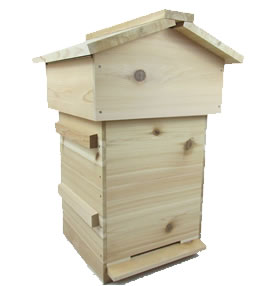Difference Between Beehive and Honeycomb
When it comes to beekeeping and the fascinating world of bees, understanding the difference between a beehive and a honeycomb is essential. While both are integral parts of a bee colony's habitat, they serve different functions and have distinct characteristics.
Beehive
A beehive is a man-made structure designed to house and manage bee colonies. It provides shelter, protection, and a conducive environment for bees to thrive and carry out their activities. Beehives come in various types and configurations, such as Langstroth hives, top-bar hives, and Warre hives, each with its unique features and benefits.
Beehives are typically constructed using wood, plastic, or other durable materials. They consist of several components, including bottom boards, brood boxes, honey supers, frames, inner covers, and outer covers. These components work together to create a functional living space for bees and facilitate beekeeping tasks such as hive inspections, honey harvesting, and pest management.
Honeycomb
Honeycomb, on the other hand, refers to the intricate hexagonal structures built by bees to store honey, pollen, and raise their brood. It is a natural creation of bees using beeswax, a substance secreted by worker bees from special glands on their abdomen.
The honeycomb serves as the storage unit within the beehive, where bees deposit nectar collected from flowers, which is then processed into honey through dehydration and enzyme activity. The hexagonal shape of the honeycomb cells maximizes storage space while minimizing material usage, making it an efficient and remarkable architectural feat in nature.
Differences
While both the beehive and honeycomb are essential components of bee colonies, they serve different purposes and exhibit distinct characteristics.
- Structure: A beehive is a man-made structure constructed by beekeepers to house bee colonies, while a honeycomb is a natural structure built by bees within the hive.
- Function: Beehives provide shelter, protection, and management capabilities for beekeepers, whereas honeycombs serve as storage units for honey, pollen, and brood rearing.
- Material: Beehives are typically made of wood, plastic, or other durable materials, while honeycombs are constructed using beeswax produced by worker bees.
- Origin: Beehives are created by humans for beekeeping purposes, while honeycombs are created by bees as part of their natural behavior and habitat.
In conclusion, while both the beehive and honeycomb play vital roles in beekeeping and bee colonies, they are distinct structures with different functions, origins, and characteristics. Understanding these differences is essential for beekeepers to effectively manage their hives and ensure the well-being of their bees.



